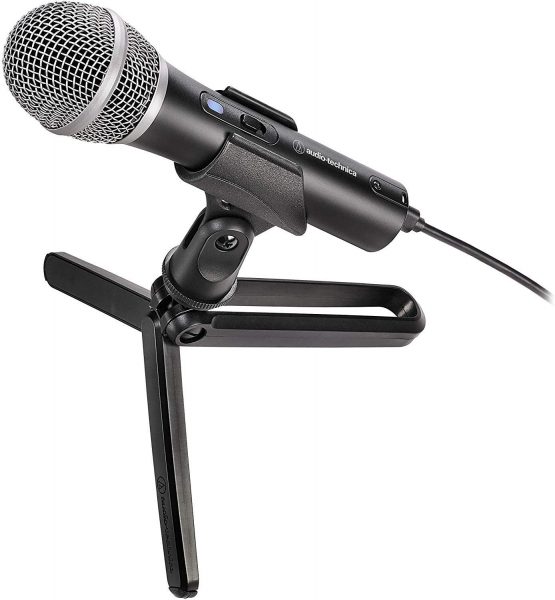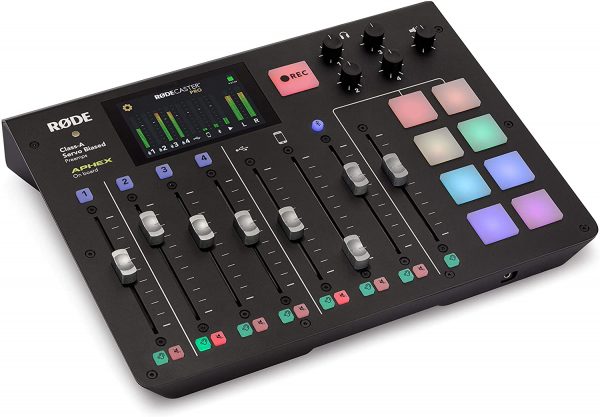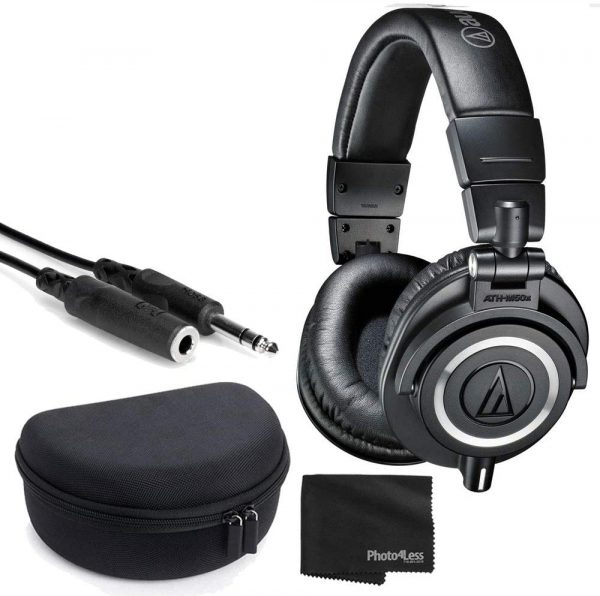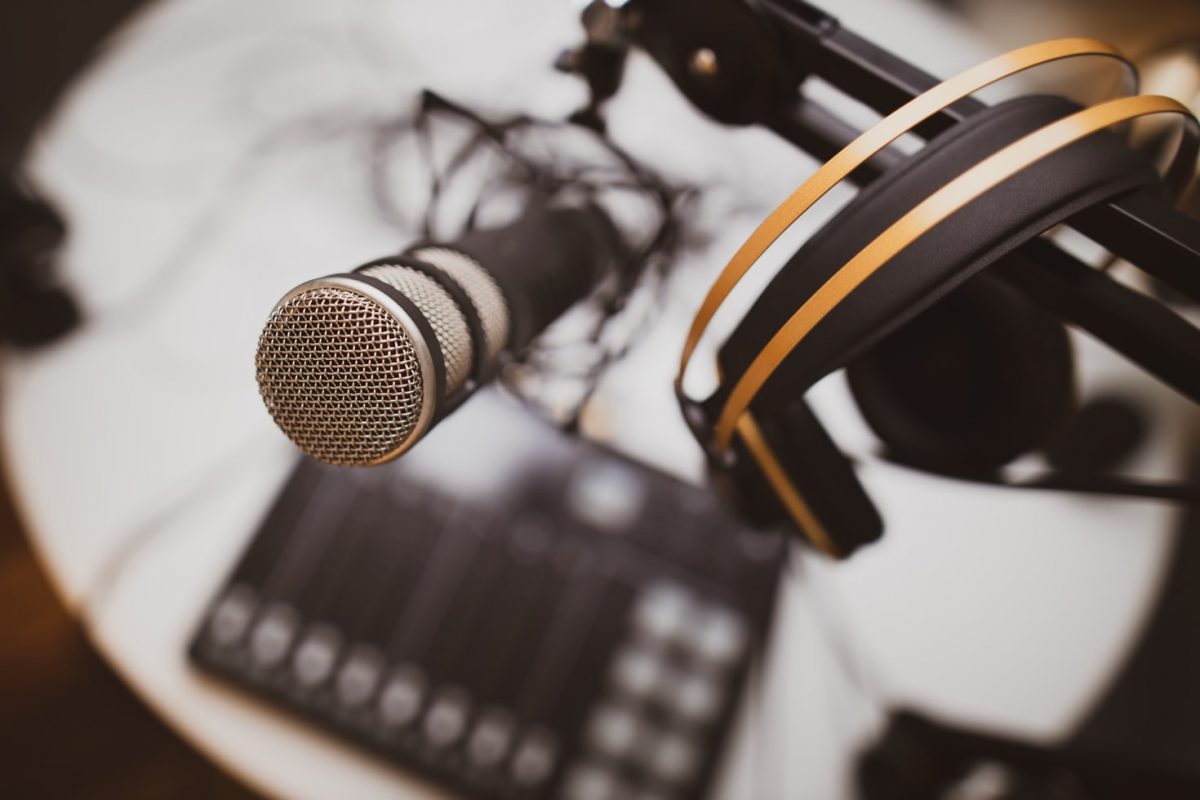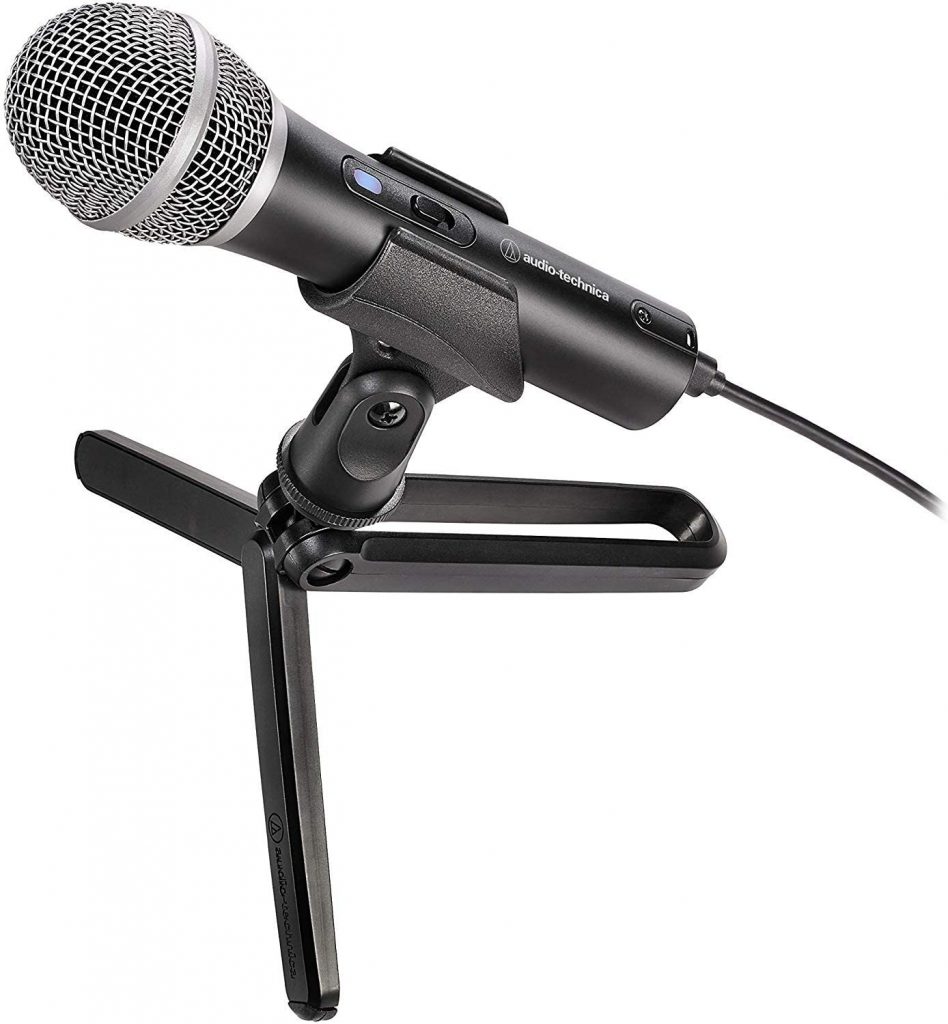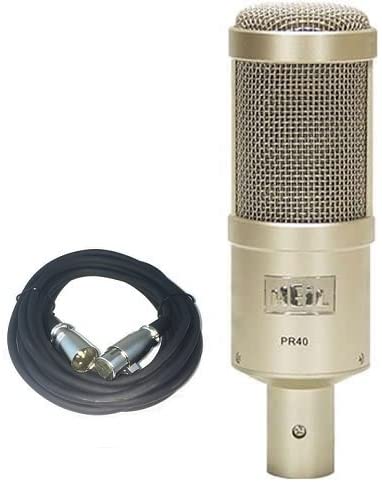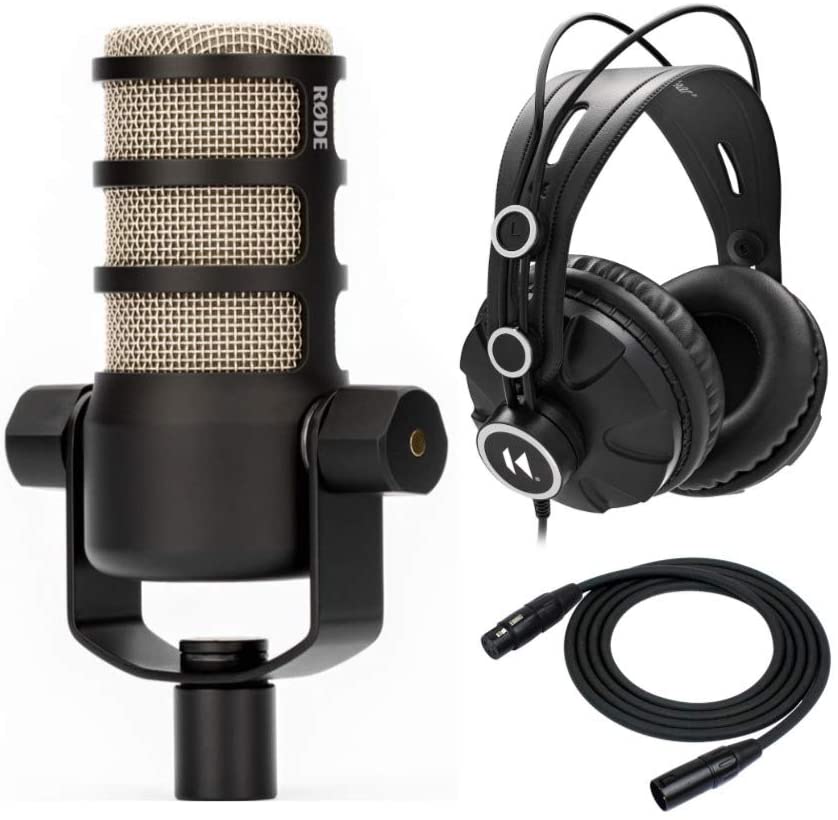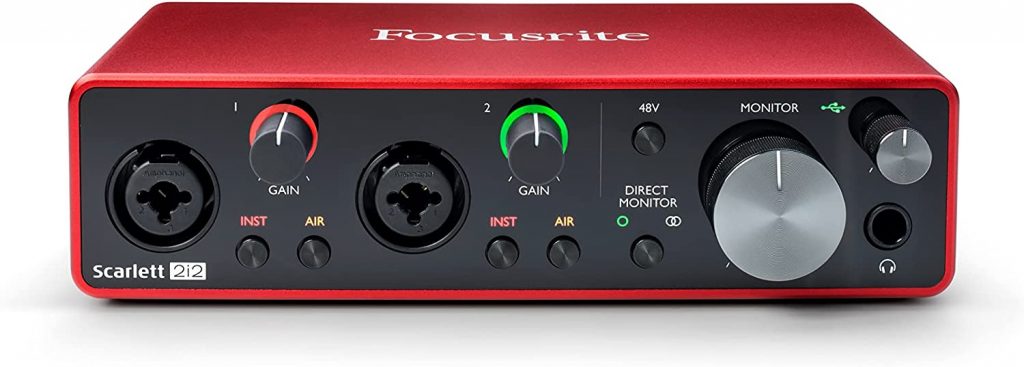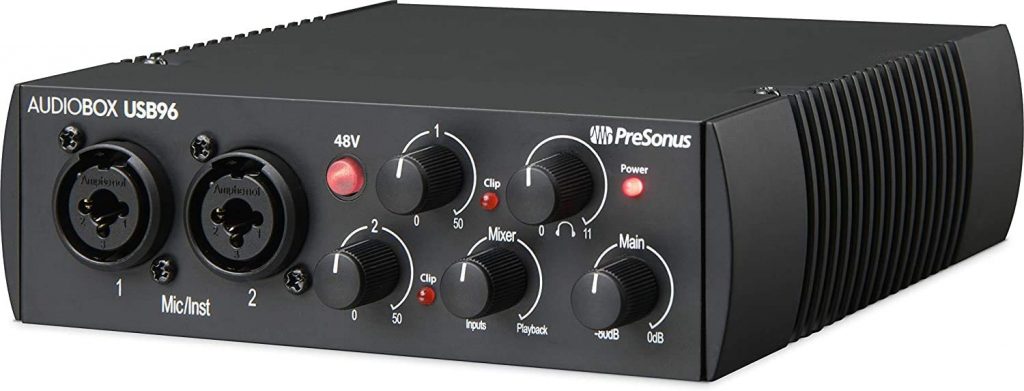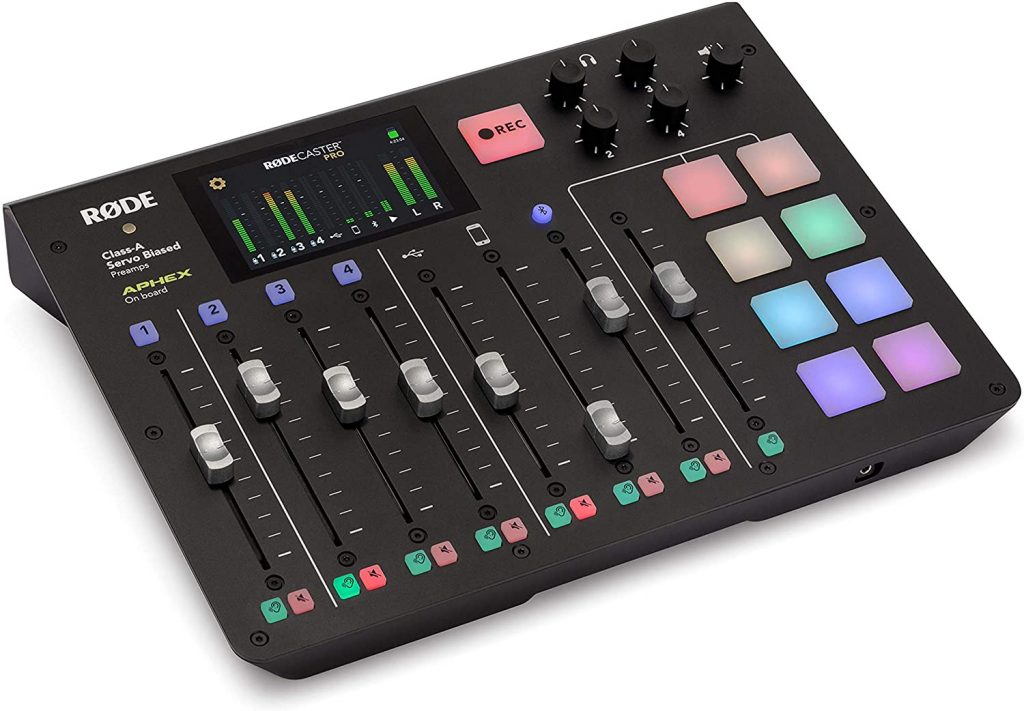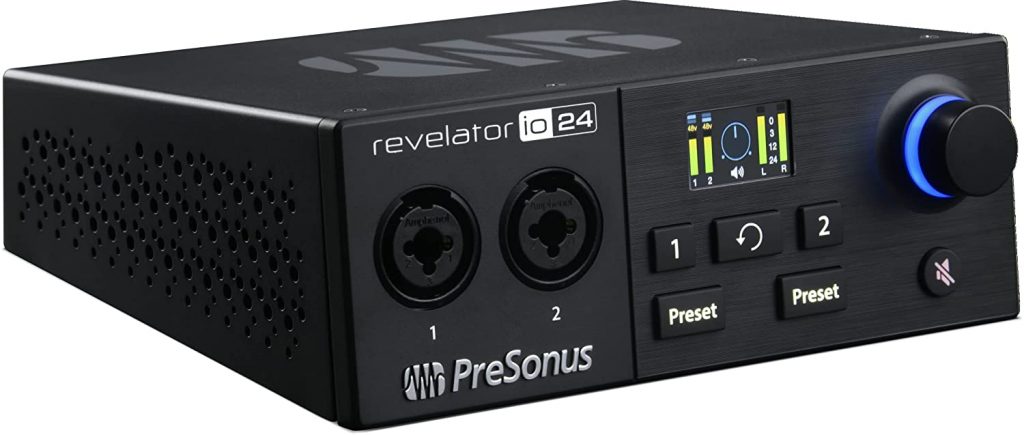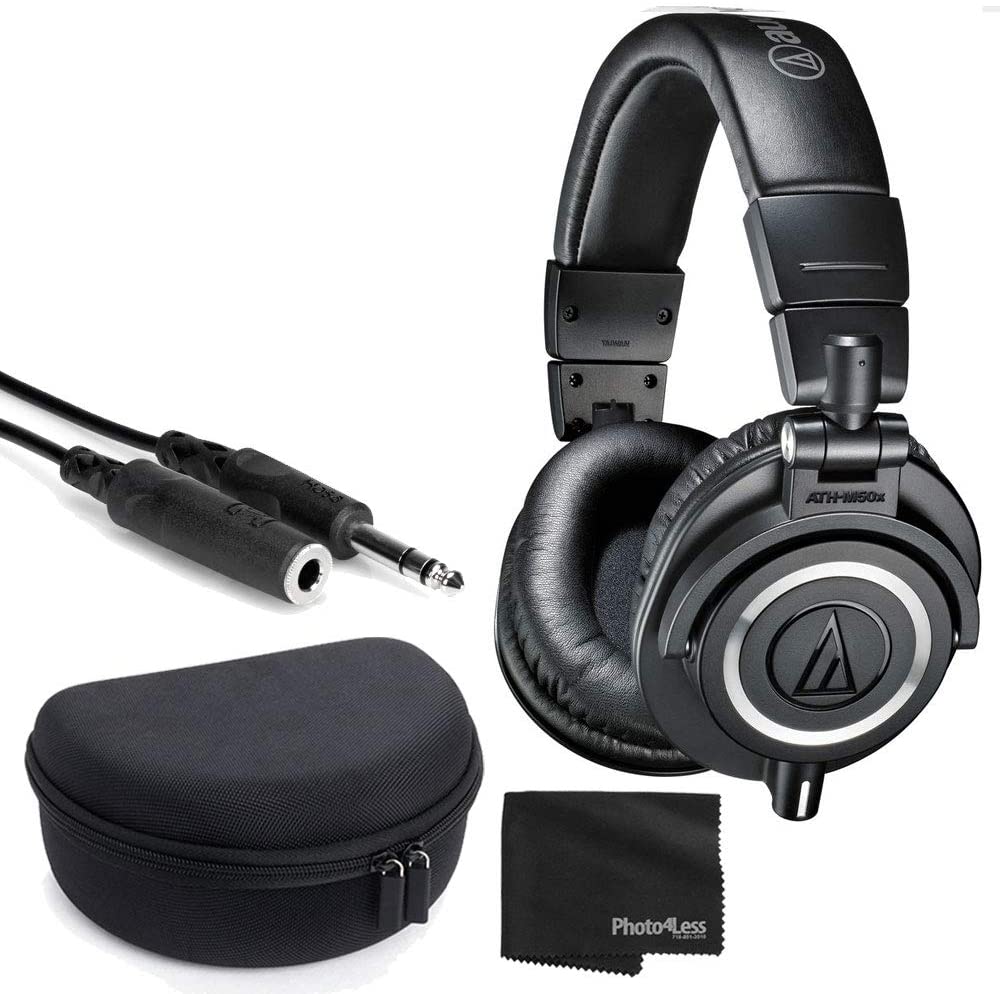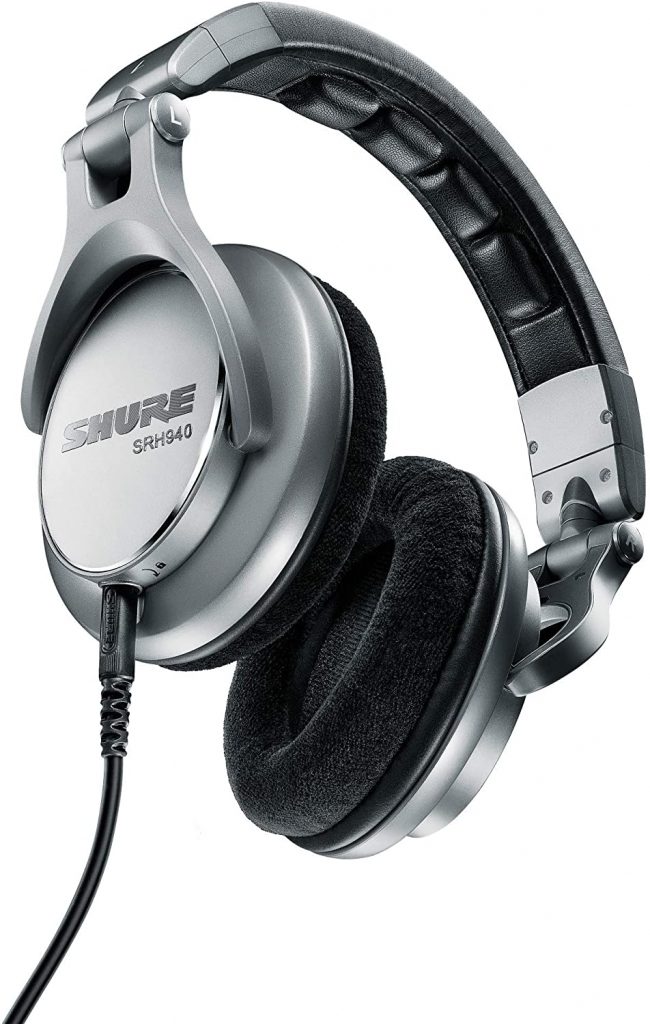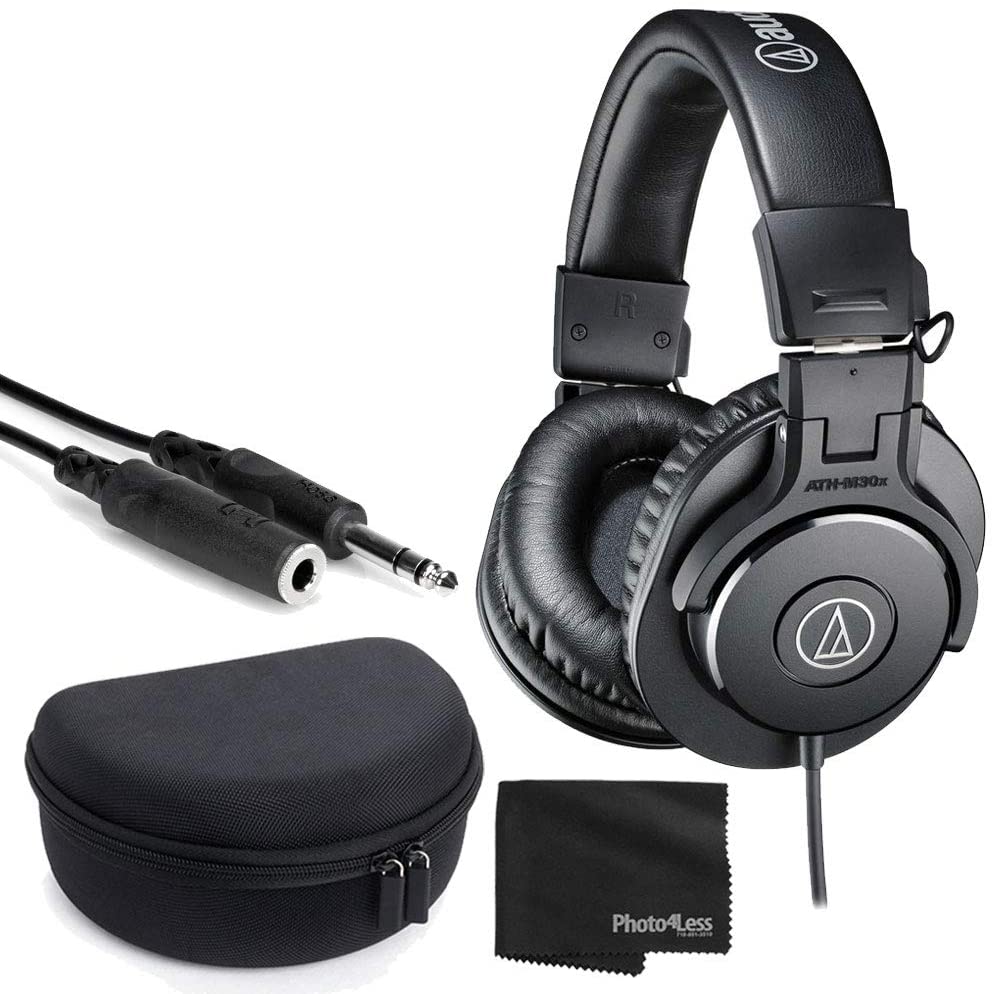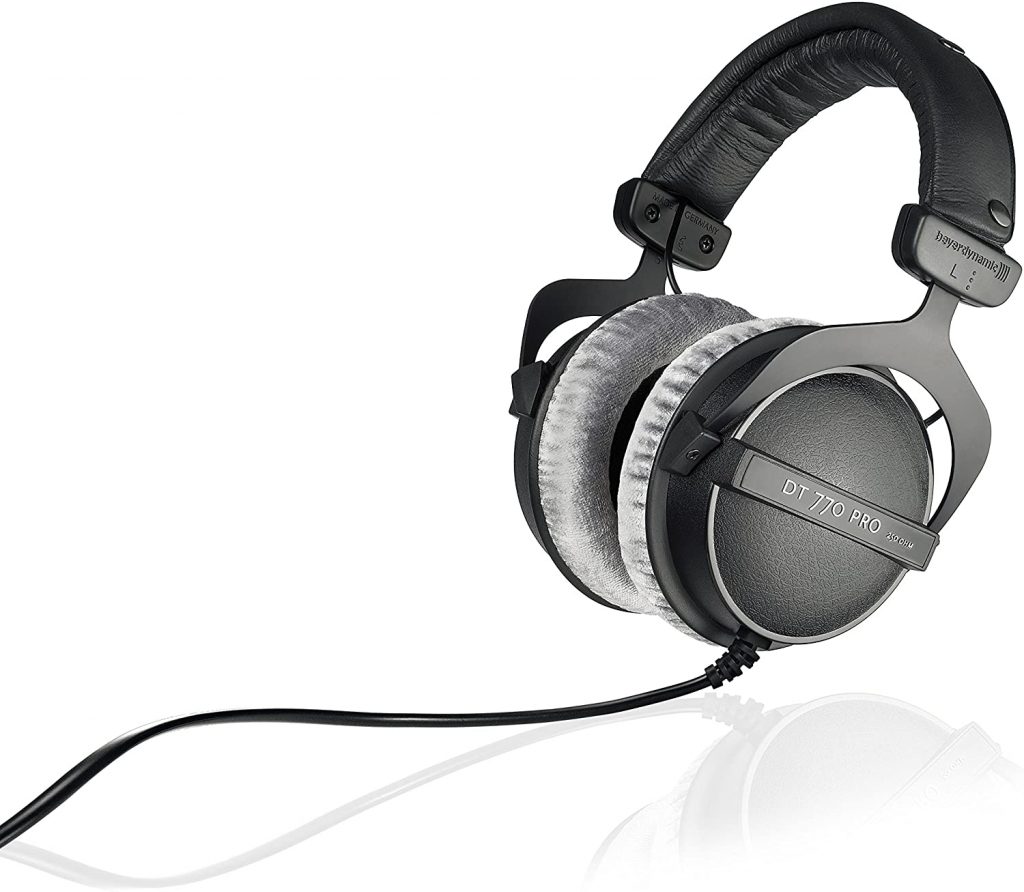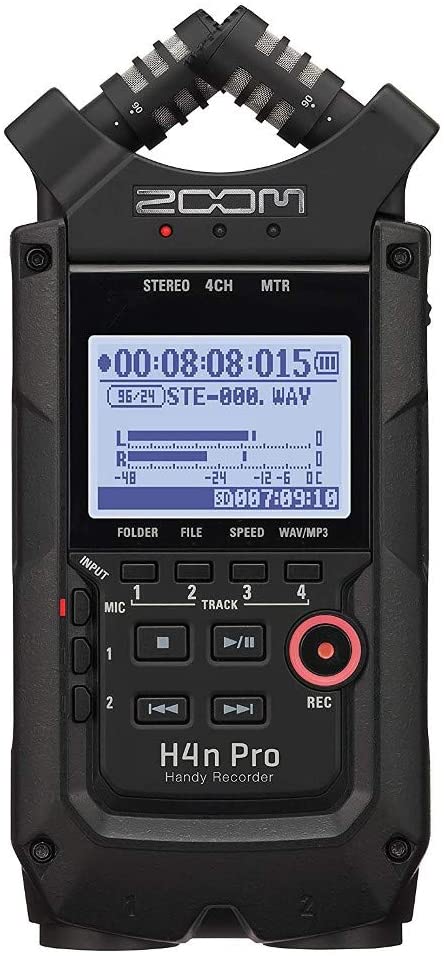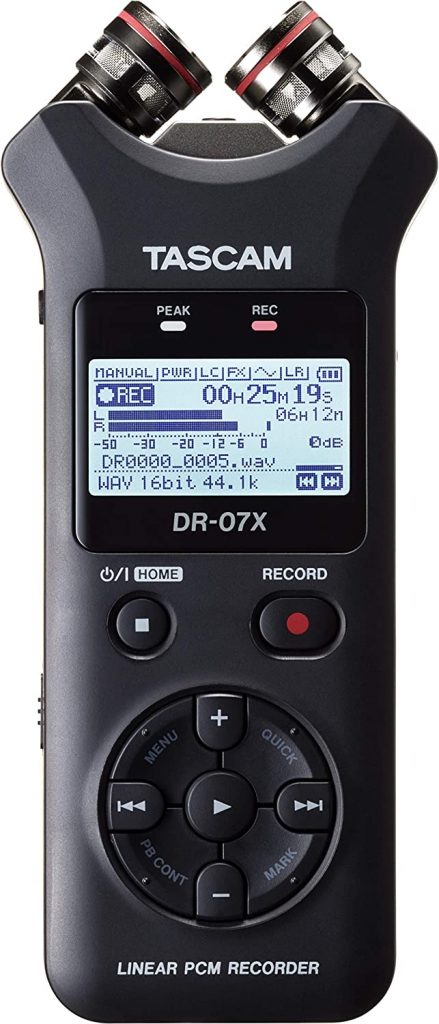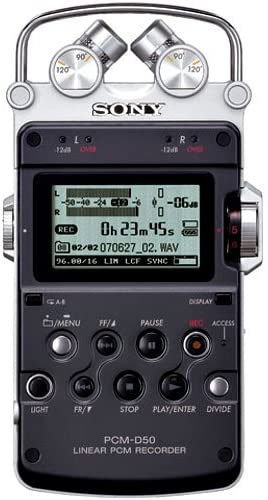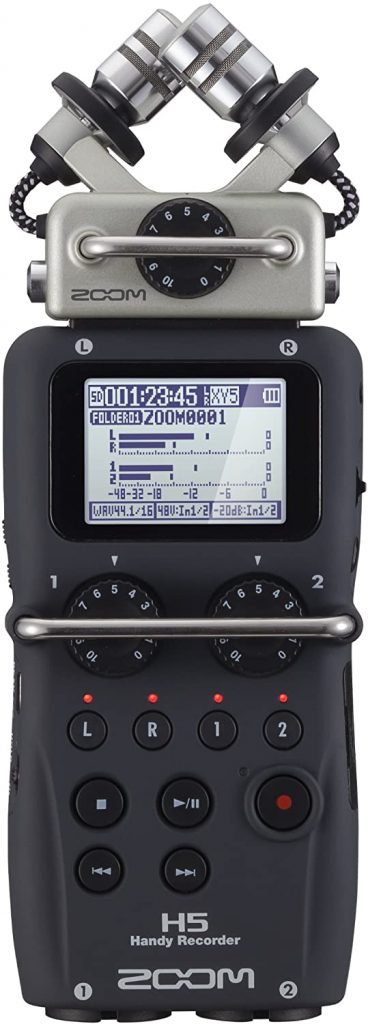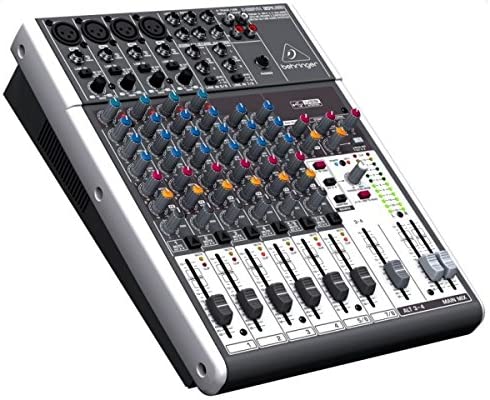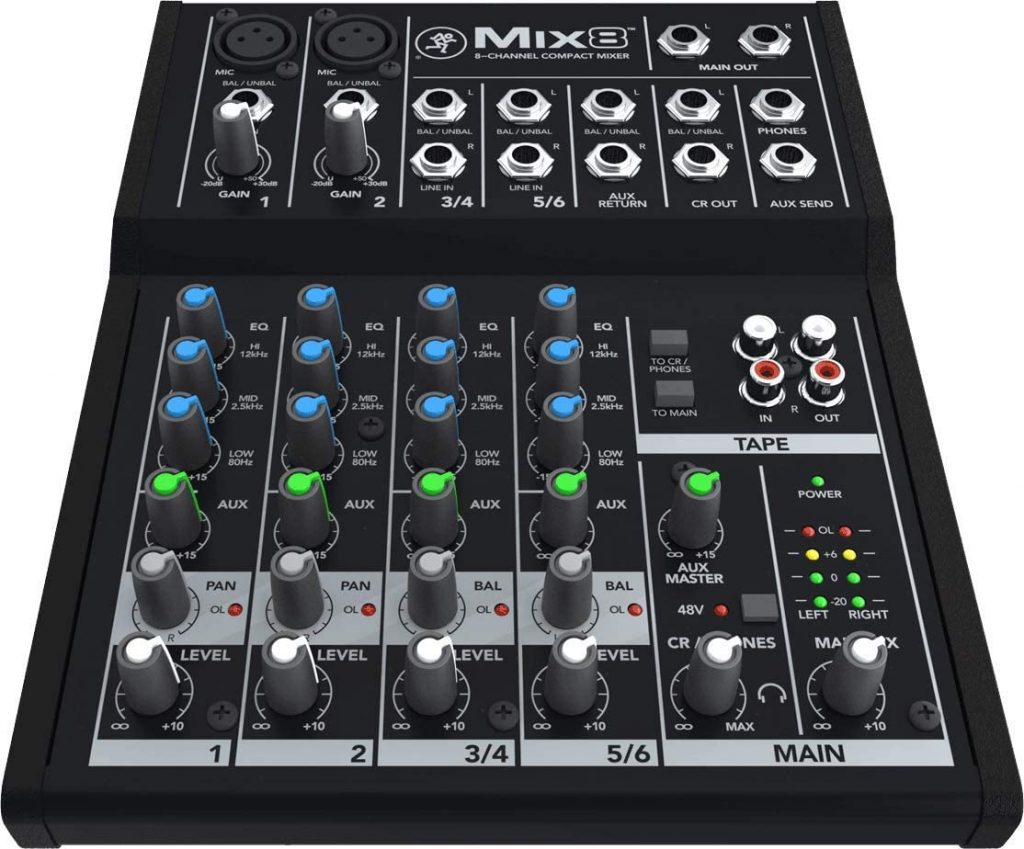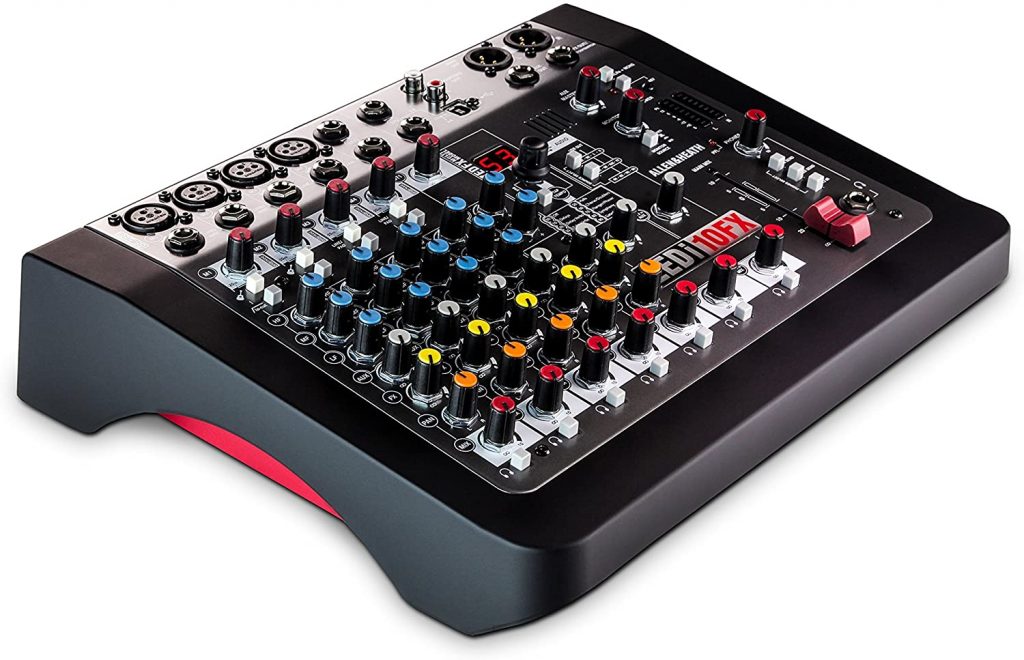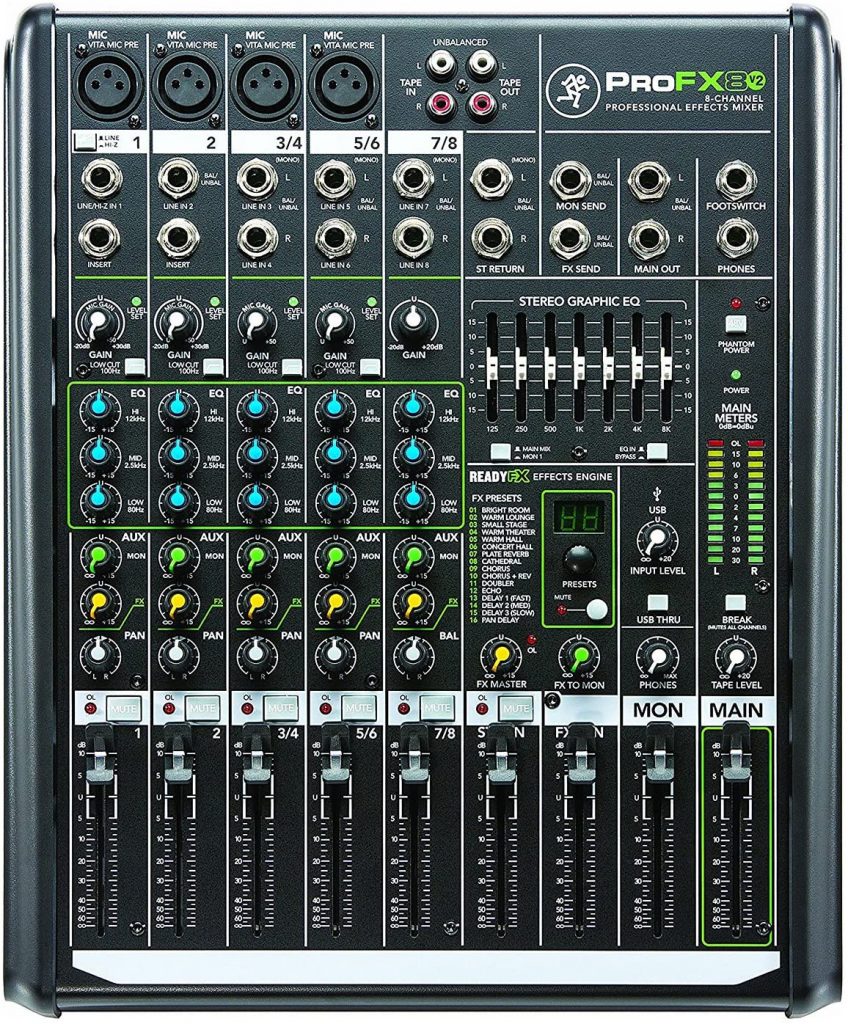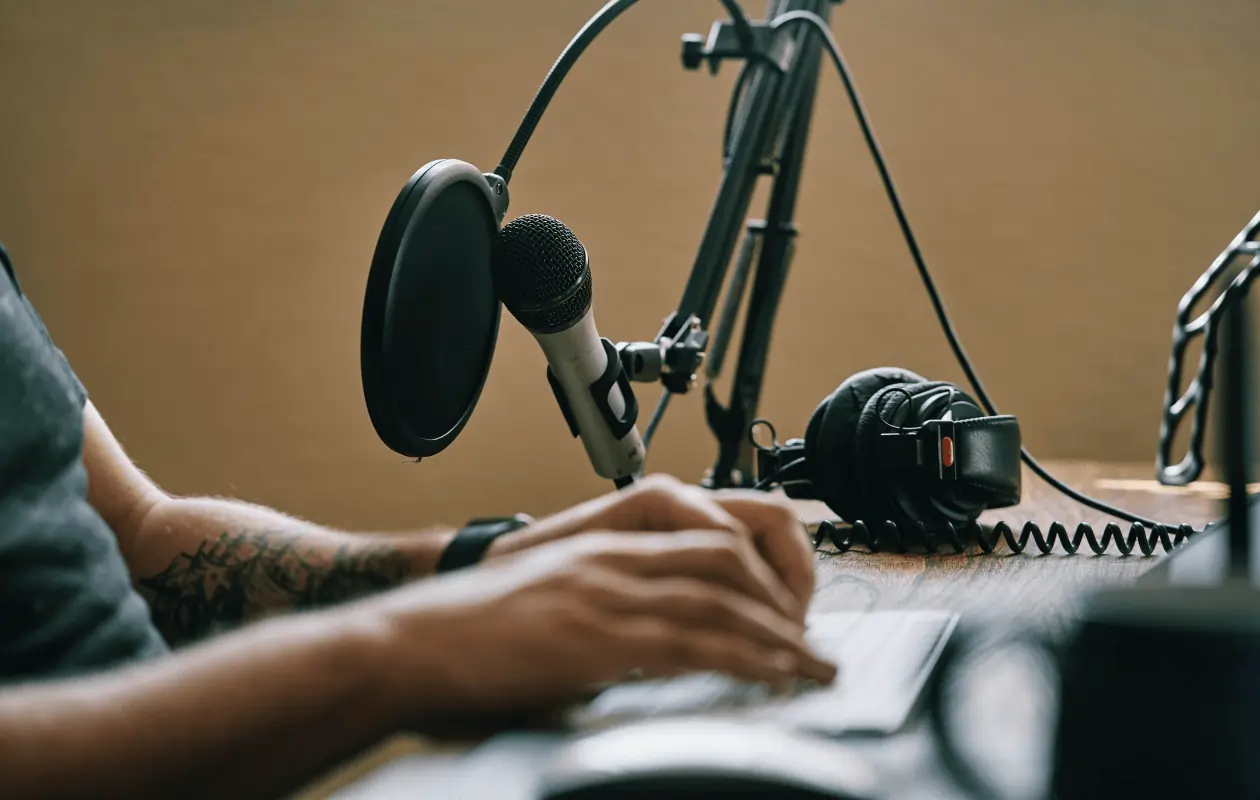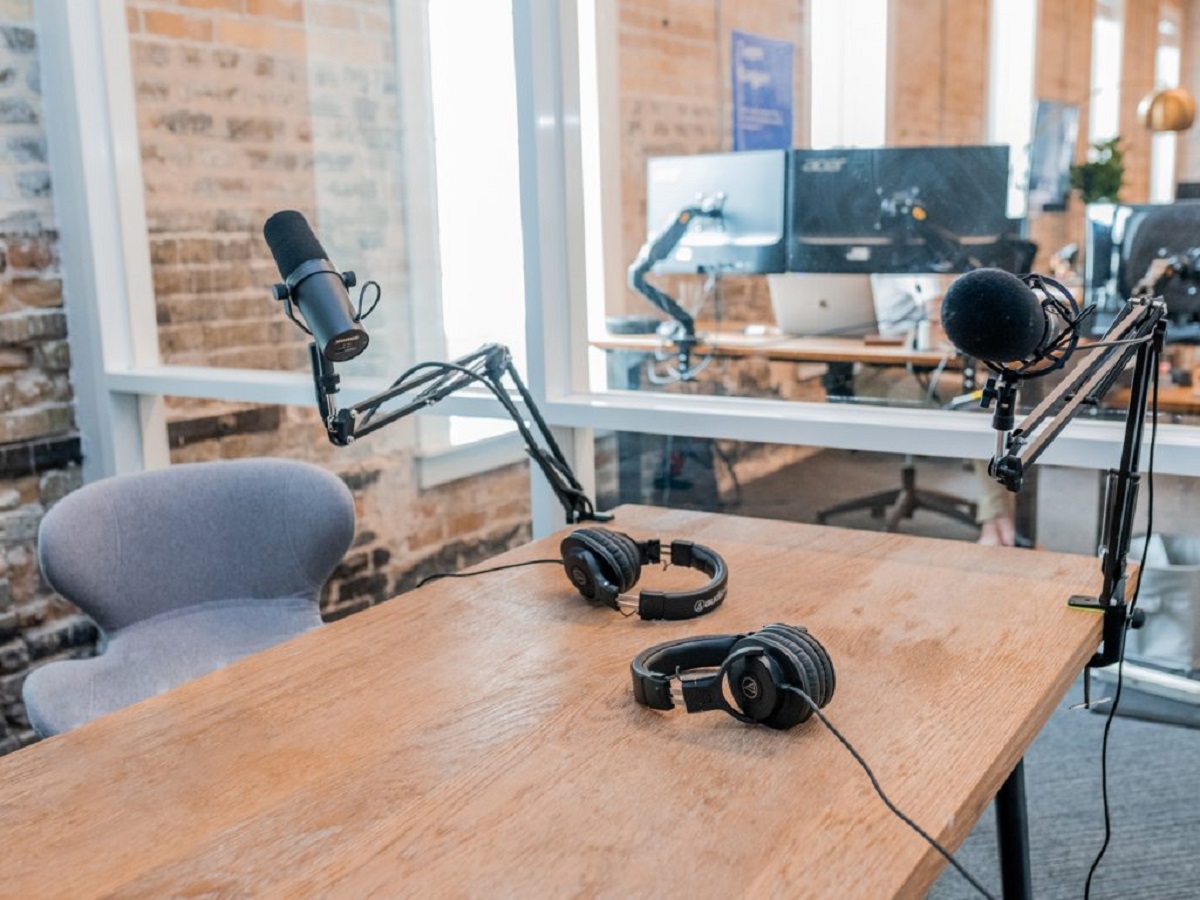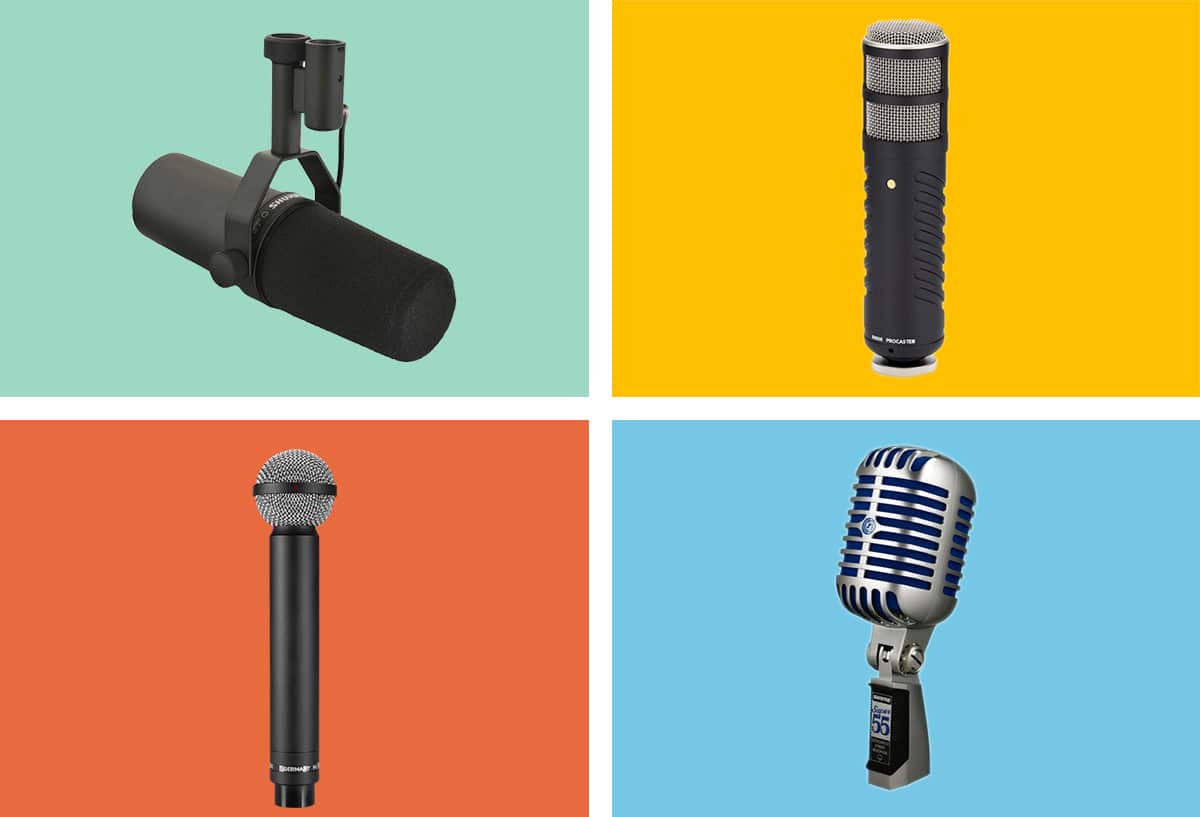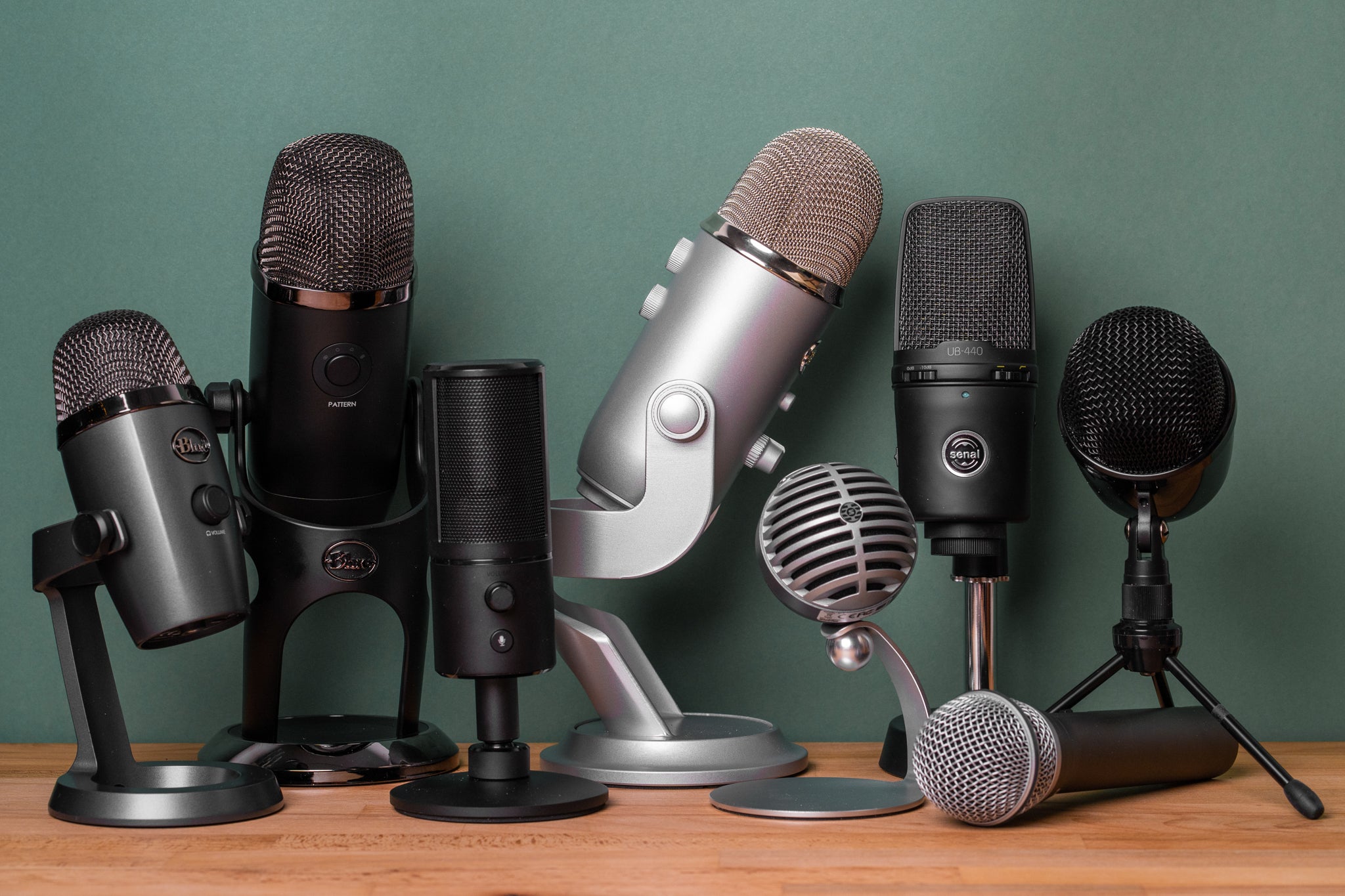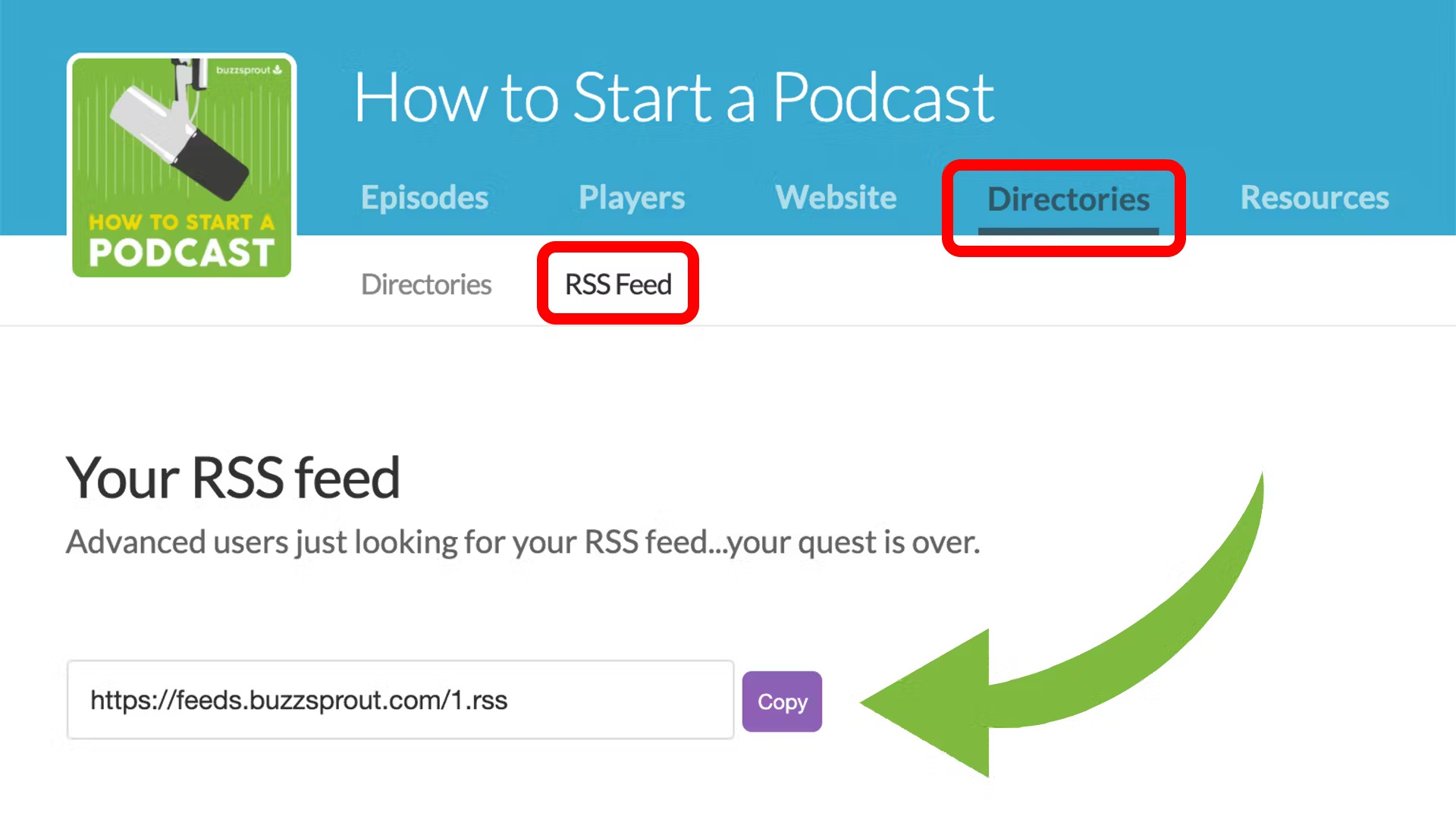Starting a podcast can be simultaneously challenging and rewarding, and you’ll need a variety of podcasting equipment to deliver high-quality outputs. From microphones to external recorders and audio mixers, there are many options to help you improve the overall quality of your podcasts. Let’s explore some of the podcasting equipment categories and the best products under them.
20 Best Podcasting Equipment for Beginners
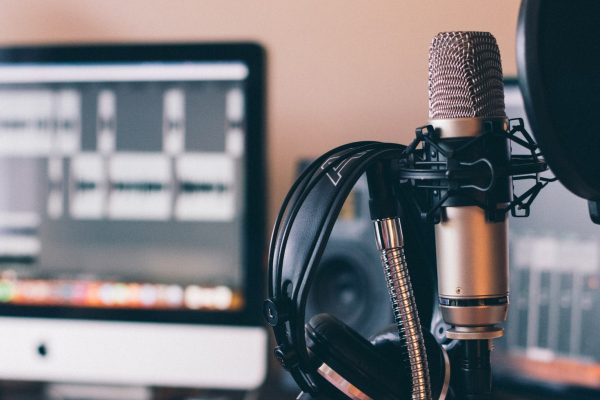

Good quality audio is an essential part of any podcast, and picking the right podcasting equipment can make a huge difference in terms of audience impact. From microphones to amplifiers, here are some of the podcasting equipment categories and products that can help you deliver professional-quality podcasts for your audiences to enjoy:
Best Microphones for Podcasting
So you’ve purchased a spot on an online podcasting website, perhaps from Libsyn or Spreaker. Presuming you already have a laptop to work with, the next logical step is to purchase a microphone. A microphone is probably the essential piece of equipment you can get, as it allows you to record your podcast straight into your computer.
Microphones are classified into two types (USB or XLR) depending on the kind of connection it relies on. USB-type microphones can convert analog signals into digital signals, allowing them to plug directly into your computer. XLR-type microphones, on the other hand, only record analog signals and require a dedicated audio interface to convert the signals into a digital format.
Microphones are without a doubt a valuable tool for podcasting, and your choice of microphone can easily make or break the quality of your output. Luckily, we’ve got a few recommendations at hand:
You probably don’t need an extremely fancy or spec-filled microphone as a beginner. If you’re looking for a straightforward solution, then the ATR 2100X-USB Cardioid Dynamic Microphone comes to mind.
This microphone looks like your stereotypical microphone, with a tall plastic base attached to a globe-shaped, metal voice coil. The microphone comes with a USB port at the bottom, so you do not need a separate audio interface. It also features a mute switch for turning the microphone off temporarily, as well as a LED indicator to let you know when it’s connected via USB.
Aside from its ability to deliver excellent sound quality, the microphone also has both USB and XLR outputs. In other words, you can plug it directly into your computer via USB or into a mixer via XLR. Another essential characteristic is its ability to filter out background noise, which helps in a noisy environment.
The Audio Technica ATR 2100x-USB Cardioid Dynamic Microphone is one of the more affordable options in the market. It retails for less than USD 100 on Amazon. The microphone is meant to sit on top of tables, and it comes with its table-level tripod stand.
If you are looking for a comprehensive yet easy-to-use microphone, we highly recommend the Shure MV7 USB Microphone.
The capsule-shaped microphone is attached to a swivel mount, which allows the microphone to move upwards or downwards in a secure fashion. The microphone itself is covered in a replaceable, screw-on foam pop filter/windscreen, and underneath is the actual capsule which records in a unidirectional, cardioid pattern.
Instead of buttons and switches, the microphone has a touch panel at the front decorated with LED lights to indicate gain level. The touch panel also includes a mute mic toggle for turning the microphone off temporarily. The back of the unit also contains a single XLR port, MicroUSB port, and a headphone jack.
The MV7 can be used both as a USB or XLR mic, and you can run both outputs simultaneously. This dual process allows you to keep both a high-resolution copy for post-production and a low-resolution copy for backup or transcription.
The Shure MV7 is admittedly one of the more expensive options in the market, but it’s worth it if you are after a professional-quality podcast. Shure also throws in two cables along with the microphone; one USB-A to MicroUSB cable and a USB-C to MicroUSB cable.
The Shure MV7 USB Microphone retails for less than USD 250 on Amazon.
If you’re curious about which brands most podcasters use or trust, then one of those brands is Heil Mic. Heil Mic has a wide selection of podcasting equipment, but the best they offer is the Heil Sound PR40 dynamic microphone for mics.
The cylindrical-shaped microphone is covered in a metal mesh and champagne-colored plastic plating. The microphone is attached to a swivel adaptor, allowing the microphone to move upwards or downwards.
Underneath the metal mesh is microphone capsules. These are made up of the ideal combination of metals, including iron, neodymium, and boron. This combination allows the microphone a more comprehensive frequency range and high sound pressure levels (SPL).
The microphone base is attached to a Sorbothane shock absorber, which helps reduce vibrations that enter the microphone. Additionally, it features a coil shield that helps to reduce interference from nearby electronic devices and transformers. As a bonus, the device comes with a basic table mound that’s meant to hold up the level to your face level.
Performance-wise, the microphone has a pretty accurate sound reproduction, with vibrant bass instruments, voices, and kick drums compared to other cardioid-type mics. The microphone capsules record audio in a cardioid pattern, meaning it only records sounds that are directly in front of it while ignoring sounds within the periphery.
These features come at a price, and the Heil Sound PR40 is not cheap, with its retail price of over USD 450. If you buy on Amazon, you might be able to get it for a discounted price of less than USD 400.
If you’re on a budget and want something more specific to podcasting, we highly recommend the Rode Podmic Dynamic Podcasting Microphone.
The cylindrical PodMic is relatively small and lightweight, measuring a mere 6.8 by 2.4 by 4.3 inches (HWD) and weighing roughly 2 pounds. The front-address microphone has a dual-layer metal mesh with an internal pop filter to help reduce plosives and sibilance.
The microphone is suspended in a built-in swivel mount that allows it to move up and down. Meanwhile, the back of the enclosure hosts an XLR connection. The device also features an internal shock mount that protects it against unwanted bumps.
Perhaps the only downside to the PodMic is that it can only connect via XLR. In other words, you can’t simply plug it into your computer like a USB mic, and you’ll need to use a separate audio interface to convert the audio.
The microphone offers a clean and uncolored sound signature. In addition, its pop filter appears to be effective at removing pops and other unwanted air-filled sounds. The microphone’s cardioid recording pattern also effectively rejects sounds that come from anyone or anything behind the microphone.
The Rode PodMic is available for a highly reasonable price of less than USD 110 on Amazon.
Recommended Digital Audio Interface for Podcasting
If you need something more sophisticated than a simple microphone to record your podcast, you may need a digital audio interface (DAI). Audio interfaces allow you to connect your XLR podcasting mic, capture the sound, and translate the analog signal to digital before recording it to your computer.
All condenser and dynamic mics require an audio interface, but USB mics already have a form of an interface built-in. But more than these basic functions, audio interfaces also allow you to improve your recordings during and post-production. You can do such things as musical interludes, rebalancing, isolating voices, or conducting a smattering of other refinements. Another way you can refine your content is to use an audio editor program. Still, these can only work after you have moved your files into your computer.
Having said this, here are some of the best audio interfaces that podcasters swear by:
The Focusrite Scarlett 2i2 is a lightweight, box-like device with a black front panel and signature red enclosure. The front of the device houses multiple inputs and control dials, including dual quarter-inch/XLR inputs. These inputs have a two-fold function, and they accept both microphone inputs and instruments like guitars, basses, and keyboards.
The device has equally compelling specs, including a 48-volt phantom power switch, monitor level knob and switch, a TRS headphone jack, and TRS left and right line outputs. The device plugs and charges directly from your computer via a USB-C port.
Performance-wise, the Scarlett 2i2 can capture vocals, ambient sounds, and instruments in incredible detail and clarity. Add to that the very low latency of the unit, and you have a genuinely high-end performance for an entry-level price. The mixer also works with an impressive selection of software that comes in with the package for free.
The Focusrite Scarlett 2i2 sound mixer retails on Amazon for USD 170 to 190.
The PreSonus AudioBox USB 96 is a compact and portable audio interface that you can take outside of the studio. The unit has a metal housing with extra-padded sides and well-fitted buttons to protect the device from bangs and bumps.
The device’s front panel contains two XLR/Line combo inputs, which come in handy when you have a co-host or guest. This arrangement will allow you to simultaneously record individual tracks for both participants, which can come in handy during the post-production phase. Additionally, the two ports accept 1/4-inch plugs for connecting musical instruments.
The back of the device contains other ports, like a USB-A port, a left/right 1/4-inch jack, balanced TRS monitor outputs, and MIDI connections. You probably won’t need these extra ports for podcasting, but additional options are always great to have.
On the performance front, the PreSonus AudioBox USB 96 promises crystal-clear digital sound, with many options for sound customization. Best of all, the device comes with PreSonus’ digital audio workstation (DAW), the Studio One Artist.
With this software, you can easily compose, record, mix and produce music. The mixer plugs directly into your computer via a USB connection, so you don’t have to worry about transferring your files.
Although, you may want to note that if you are using a PC/laptop, you will need to install a device driver from the PreSonus website. On the other hand, Mac computers are able to pair with the device directly without the need for device drivers.
The PreSonus AudioBox USB 96 is on the more affordable side of the price range, and you can get one from Amazon for less than USD 100.
The Rode RODECaster Pro is a highly ambitious and stylish audio interface with sound mixer capabilities.
The RODECaster Pro combines four XLR microphone inputs with Bluetooth and USB connections for mobile devices. Additionally, it includes four monitoring headphone outputs for listening in on your music before the editing stage, as well as eight programmable pads for playing sound effects. A small LCD screen on top allows you to control recordings, tweak sound levels, and save files to microSD cards.
With four XLR inputs, the device can accept up to four mics at a time, and it accepts both condenser and dynamic microphone types. Each input can record independently of the other inputs, which helps a lot during post-production. The sound levels adapt to your movements to keep the sound stable and uniform. The device connects to your Mac or Windows computer through a USB-C to USB-A connection.
The RODECaster Pro has an abundance of audio processing options. These include a compressor for balancing volume, a noise gate for reducing background noise, a de-esser for reducing sibilance, and ducking for lowering music whenever you speak. Other filters include a high-pass filter, which lowers popping sounds, and aural exciter, which can change the tone of your voice.
Audio outputs for this device are high-definition, high-fidelity, and ultimately broadcast-worthy. But perhaps the most notable aspect of its performance is that you can amplify audio signals as well as add special effects both during and after the recording session.
The RODECaster Pro is not cheap, but it’s definitely useful for podcasting, music production, and other projects. The audio interface retails for a price between USD 600 to 650 on Amazon, and a monthly installment payment scheme is also available.
The PreSonus Revelator io24 is a smart and compact audio interface designed with the users’ ease of use in mind. The compact device is only about half as wide and significantly lighter than most audio interfaces. The device is encased in metal to protect it from the elements as well as accidental bumps.
At the front of the device is a small, colored LCD screen, rubberized push buttons for input selection, DSP presets, navigation, and a handy mute button. Either input button gives you access to preamp features like high pass filter, gain, and phantom power.
Also located at the front are dual XLR sockets, into which you can plug your XLR mics and other instruments. Meanwhile, extra ports such as balanced lineouts, a headphone socket, and a MIDI in/out port can be found at the back. It also contains a USB-C port for connecting to your Mac or PC.
When put to work, the PreSonus Revelator io24 generates high-definition audio, with recording qualities of up to 24 bit/96kHz. Best of all is the device’s seamless integration with StudioOne, which gets you access to just about everything you need.
The PreSonus Revelator io24 USB-C Audio Interface offers great functionality and value for an entry-level setup, and it will only set you back around USD 200. A monthly installment payment scheme is also available.
Best Closed-Backed Headphones
Podcasting often requires you to listen from an external audio source, either from audio clips or real-time inputs from your co-host or interviewees, while speaking into a microphone. Unfortunately, this can easily lead to audio bleed, where sounds from your headphones leak into your microphone, causing reverberations and other distortions.
A good pair of closed-back headphones can prevent sounds from leaking from audio clips and live audio feed during recording. The headphones also come in handy during the post-production process, as they allow you to listen in and eliminate imperfections in the final recording. Alternatively, you may want to use noise-canceling headphones when editing so that you can isolate external noises from the audio.
Allow us to share some of the best open-backed headphones that you can use for podcasting:
The Audio-Technica ATH-M50x has a utilitarian aesthetic, with its all-black headband, earmuffs, and flat oval earcups. Silver rings around the Audio Technica logo accent the all-black headphones at the earcups. Other than black, different colors, including gunmetal, white, and purple, are available.
The earcups and headband are made out of a dense plastic material that is waterproof and dust-resistant. A metal frame supports the joints between the headband and the earcups, allowing the headband to pull away from the cups to match any head size.
The TH-M40X has an extra-large form factor, with a very chunky headband and the thick hinged part where the cups are attached. However, this large size allows the earcups to feel more comfortable. It also compresses into a more compact format, allowing the device to fit inside any bag or container.
Performance-wise, these are great sounding headphones that offer excellent reproduction of the bass, mid, and treble ranges. Having said this, they’re also great for listening to your guests, whether they’re in the same room with you or not. The unit doesn’t have active noise cancellation or audio controls, only passive noise cancellation.
The Audio Technica TH-M40X headphones are available on Amazon for less than USD 150. The unit comes with three 3.5mm cables that connect to your computer or sound system and a soft, scratch-resistant pouch for storage.
Most people scoff at the thought of spending USD 200 on a pair of headphones. But as a professional podcaster who delivers audio content for a living, such expenses are entirely justified. If you are looking for a long-term solution and have the budget, then the Shure SRH 940 comes highly recommended.
Everything about the Shure SRH 940 headphones scream quality, from the metal base to the foam-padded, leatherette-covered headband and earcups. The earpads can be removed to clean them out as well as replacement. The unit connects to your audio source via Bluetooth, with a little over 19 hours of juice before requiring a recharge via USB-C cable.
The sound quality on these headphones is stellar right out of the gate, thanks to the pair of 50mm sound drivers. These drivers create an accurate sound signature and keep the frequency response accurate and neutral. The 70-300Hz bump makes it easier to hear vocals, perfect for recording podcasts.
Aside from excellent sound reproduction, these headphones also feature active noise cancellation and ambient sounds. You can also access Google Assistant, and all controls are accessible from the right earcup of the unit.
The Shure SRH 940 is a little bit expensive, but its durable build will help to make it last for years to come. The device retails for less than USD 300 on Amazon.
Suppose you want a simpler and more affordable solution for the same audio quality. In that case, we highly recommend the Audio Technica ATX M30X.
From a design perspective, the earcups on the ATX M30X look a lot like the TH-M40X, with a thick, padded headband and earcups that swivel ninety degrees forwards and backward. The all-black design of the unit is a little bland, except maybe for the Audio Technica logo on each side of the earcups as a type of design.
A metal band reinforces the headband and the earcups, and this band is noticeably thinner than that of the TH-M40X. The earcups also fold into a more compact format for storage purposes, and the non-detachable audio cable wounds right into the unit.
The ATX M30X has a pretty accurate frequency response, except its mids are slightly underemphasized. In other words, this unit will likely do better for podcasting and listening than sound mixing. The device also relies solely on passive noise cancellation, which isn’t that much of a deal if you are recording inside a quiet studio in the first place.
The Audio Technica ATX M30X headphones are available on Amazon for less than USD 80. The unit comes with a three-meter 3.5mm cable and a scratch-resistant pouch to protect the unit.
Good sound quality sometimes requires a little bit of sacrifice, and that small sacrifice can mean all the difference for your audio projects. If you’re looking for top-notch performance and comfort in your earphones, the Beyerdynamic DT990 Pro headphones come highly recommended.
The DT990 Pro headphones are mostly made out of plastic, except for the metal components near the earcups. The earphones come in an all-black color, with the only accent coming from the headphones’ name and the gray memory foam earpads, which you can see from the open-back design.
But perhaps the one design aspect that makes it stand out is the memory foam padding wrapped in velour. Velour is a unique cotton-like material that feels silky soft to the touch. It’s quite an unusual material to find in a pair of headphones, but it does make all the difference when it comes to comfort.
But while the build quality could have been better, the one aspect where the DT990 shines is sound quality. The headphones deliver an accurate frequency response, with instrumentals and vocals getting equal emphasis and amplification.
Unfortunately, the headphones are still cabled, and it comes with a removable one-meter cable terminating in a 3.5mm jack. The package includes a 1/4 inch adapter that helps your unit plug into higher-end gear.
The Beyerdynamic DT110 retails for less than USD 180 on Amazon.
Best External Recorders for Podcasters
While the home or studio may be the most comfortable place to get your podcasting work done, it doesn’t always have to be the case. In some cases, you may need to record impromptu interviews with people at events or otherwise turn your public presentations into podcasts by recording them. A standard studio mic won’t do in such cases, and you need an external recorder.
Here are some of the best external recorders you can try:
The Zoom H4n Pro 4-Track portable recorder is one of the most popular digital recorders among professional podcasters and for a good reason.
The Zoom H4n Pro 4-Track Portable Recorder looks a lot like a rugged walkie-talkie, with its rectangular form factor protected by a black matte rubber material. All controls can be found at the front of the recorder, with three LED lights at the top to indicate recording status.
The microphone has two microphone capsules on top, positioned in a unidirectional XY position. The unidirectional position of the capsules means that it pays specific attention to sounds right in front of it and not sounds coming from other directions. In addition, you can add instruments and different microphones to the H4n Pro and plug the device directly into mixing consoles.
The microphone offers four-track recording, which allows you to layer and mix audio to create a stereo landscape when it comes to specs. Moreover, it has a built-in metronome (five sound sources) and a tuner, allowing musicians to check their instruments before recording.
The H4n Pro saves files either in WAV or MP3 formats, and you can convert WAV files to MP3 to reduce their file sizes. The recorder itself only has 2 GB of storage, but it has SD and SHC card slots for extra storage.
The Zoom H4n Pro 4-Track Portable Recorder doesn’t come cheap with a retail price of about USD 250, but you may be able to get it for less on websites like Amazon.
The Pro would be the Tascam DR40X Four-Track recorder is an equally compelling yet slightly cheaper alternative to the H4n Pro.
Tascam recently gave their recorders a physical upgrade, and the DR40X is one of the few recorders to benefit from it. The LCD screen on this recorder has been modified to make use of a strong, white backlight that makes it easy to see in any lighting conditions. It also supports a higher SD card capacity of up to 128 GB.
The XY-shaped unidirectional microphone was designed specially to focus on sounds from one direction at a time. However, you can adjust it manually to have an A-B pair arc facing outwards at a mutual angle of 90 degrees for wider coverage.
The unit includes a pair of phantom-capable mic/line preamps in addition to a stereo pair of cardioid mics. You can record through all four inputs, generating separate recordings at speeds of up to 24-bit/96kHz.
The microphone defaults to recording in stereo mode, but you have other recording modes available, including Mono, Stereo, Dual, 4CH, and Overdub.
The recorder can power up to three different ways. It can power up via three AA batteries, a Micro-USB port connected to a computer or smartphone, or an AC adaptor connected to your wall socket.
The Tascam DR40X Four-Track Portable Recorder is a mid-tier recorder and retails less than USD 150 on Amazon.
The Sony PCM D50 is a relatively small portable recorder with an aluminum body and a two-inch orange screen with black lettering. A pair of condenser microphones sit on top of the recorder in XY position, which you can adjust into an A-B loop position.
The microphone features a wide selection of controls for X-Y loop, pitch control, attenuation, and low cut filters. Meanwhile, the back of the device contains ports for four AA batteries, a memory stick expansion slot, as well as a threaded hole in the back for easy mounting.
The Sony PCM-D50 microphones produce clear and crisp sounds, with a highly adaptable mic positioned at a 90-degree angle for individual recordings and a 120-degree angle for a wide stereo field.
Unfortunately, the device can record audio exclusively in the WAV format, but it can play MP3 files. Additionally, it offers a broad range of resolutions, starting from 22KHz/16-bit, all the way up through 96KHz/24-bit.
The recorder has other special features, including one that lets you divide tracks during recording and playback. You can also create custom playback loops, make lossless recordings from digital sources, and quickly transfer files to your computer via USB 2.0.
The Sony PCM D50 is a premium digital recorder and therefore comes with a hefty price tag of around USD 520 to 550. If you buy it from Amazon, you may be able to avail a monthly installment plan for the device.
If you plan to do a lot more with your mic than just podcasting, then we highly recommend the Zoom H5 Four-track portable recorder as an all-purpose solution.
The Zoom H5 is light and compact but sturdy, with an aluminum base and a rubberized body to protect it from falls. The high-quality microphone capsules on top are removable and replaceable, meaning you can remove the mics when not in use and replace them quickly.
The front of the unit contains an LCD screen and basic buttons. In contrast, the sides contain more sophisticated ports such as a line out, headphone jack, volume control, and other settings. You can even plug a condenser mic into the bottom of the device or turn it into an audio interface.
Other than the recorder, Zoom packs in a variety of bonus items, including a windscreen, a wired remote control, an AC adapter, and a USB cable along with the recorder.
The Zoom H5 promises excellent sound reproduction, thanks to its X-Y microphone placement. Its two directional mics are placed 90 degrees facing each other, which creates a stereo sound effect. The recorder has a total of four input ports, which allows you to record four tracks simultaneously.
Notable features include built-in processing, allowing you to compress and limit the audio tracks that you have recorded using the device itself. Alternatively, you can turn on a filter to eliminate unwanted ambient noises automatically. Another feature called the auto-record function automatically starts and stops recording in between pauses.
The Zoom H5 Four-Track Portable Recorder is one of the best mid-range to premium recorders that you can get for podcasting purposes, and it costs less than USD 300 on Amazon. If you prefer to pay in smaller increments, installment plans are available.
Recommended Sound/Audio Mixers
If you plan to work with a variety of audio sources, then you may need to get a sound mixer. A sound mixer, also known as a mixing console or audio mixer, is used to mix or balance different sounds from sources like microphones, instruments, synthesizers, or previously recorded audio. We’ve taken the liberty to look for the best options in the market:
The Behringer Xenyx 1204USB mixer is an elaborate and flexible analog mixer for mixing music and podcasting.
The device comes with four mono channels, powered by phantom power, each with its compressors operated by dedicated knobs. These mono channels are ideal for connecting your microphones and other dynamic instruments. In addition to the four mono channels are eight main channels, each with its own set of British-style three-band equalizers.
The XENYX preamps on those channels offer clear and warm audio quality. This mixer’s sound quality is reminiscent of the sound of studio-grade equipment, which is a great advantage. The same goes for plugging musical instruments into the same channels.
Another plus to this mixer is that it functions as a USB interface, with the ability to convert digital signals for podcast recording purposes. The device easily connects to your computer via a solid USB connection.
The Behringer Xenyx 1204USB mixer is ideal for use in a small studio or home-based recording setup. You can get the device on a one-time fee placement or a six-month installment plan amounting to USD 190.
The Mackie Mix Series 8-Channel sound mixer is well-constructed, quiet, and reasonably priced. The mixer does what it’s supposed to do while keeping things as simple as possible. As you can probably guess from its name, the mixer has eight different channels, all of which include three-band EQ.
Starting off the list are two mono microphone input channels and two stereo channels designed to handle typical line in and unbalanced signals, and two sets of RCA input/output ports. These ports, in particular, have knobs for adjusting things like gain, high, mid, low EQ, pan, AUX., and volume levels.
Additional ports include two MAIN OUT ports that feed the central mix into amplifiers or powered speakers. Additionally, it contains two CR OUT ports that you can use to run a pair of powered studio monitors or a headphone distribution amplifier. It also includes two AUX RETURN ports for connecting parallel effects devices.
Performance-wise, Mix 8 promises clean and clear sound for all channels, regardless of input. Another benefit is that it produces a quiet output signal and offers a lot of headroom, which means your audio has a healthy amount of space from the clipping point.
The Mackie Mix Series 8-Channel compact mixer is one of the best entry-level mixers and will only set you back less than USD 90 on Amazon. Take note that the package excludes TRS or RCA cables, meaning you will likely need to provide your own.
The Allen and Heath ZED 10FX is a compact, multi-purpose mixer with FX for sound recording. The device is enveloped in a strong, plastic material, with well-built knobs and dials, to protect the unit from accidental falls and bumps. The ultra-portable device is also the ideal companion inside a studio or on a road trip with performance stops.
The device comes with configurable USB audio in/out ports, which makes it a lot easier for the system to capture audio recordings. Using specially-designed input ports, you can plug in guitars and other instruments directly into the mixer. It also contains stereo input ports for plugging in your MP3/CD players or keyboards.
The ZED 10FX also alternates as a USB interface for your Mac or Windows computer, allowing you to transfer CD quality audio to and from your computer. Plug in a USB lead to your ZED, then select a USB route on your mixer and your device, and you can already start transferring your files.
The manufacturers have also added 16 time-delay effects to give you beautiful reverberations and to enhance your general sound. These effects, which are unique to the ZED 10FX, are designed for people who don’t want to carry around an extra effects unit with their gear.
Additionally, the mixer is equipped with professional XLR stereo outputs for plugging in your headphones whenever you want to listen in on your music mixes.
The Allen and Heath ZED 10FX multi-purpose mixer is on the more expensive side of the pricing scale, but it’s worth it for long-term podcasting and small-band mixing. It can set you back anywhere between USD 350 to 370.
The Mackie ProFX8v2 is a well-built and affordable analog audio mixer. Measuring 17.9 inches x 15.6 inches x 7.0 inches x (WHL) and weighing in at 4.5 kg (10 pounds), the ProFX8v2 is by no means a lightweight mixer. But it is incredibly sturdy nonetheless, with its solid steel chassis, touch ABD side protection, and high-quality posts and knobs are sure to protect the unit from the elements.
The device features a standard array of ports, including four XLR inputs, a built-in SB interface, and a seven-band graphic EQ. The USB interface allows you to play recorded music between recording sessions. In addition, you can also use it to transfer your data onto another device. Meanwhile, the graphic EQ is useful for tuning your sounds to your preferences. Also included is a headphone level output, which allows you to listen in on your mixes right off the bat.
The Hi-Z input allows you to connect either a microphone or an instrument like a guitar or bass. Moreover, all mic channels feature a 100Hz low-cut filter and 48V phantom power, along with a stereo RCA and input control.
The ProFX8v2 also has XLR inputs (balanced and unbalanced) and an FX mute option with remote control, as well as a mute switch that mutes all channels for playback purposes.
The Mackie ProFX8v2 analog audio mixer retails for anywhere between USD 90 to 100 on Amazon.
Final Thoughts on the Best Podcasting Equipment for Beginners


Whether you want to present your viewers with the latest news, scary stories, or scientific discoveries, creating a quality audio program should be a breeze when you have the right podcasting equipment.
Naturally, we are not suggesting that you get every type of podcasting equipment on this list, though it pays to be aware of what you may need in the future. Nor do you have to purchase the most expensive equipment, though, of course, those tend to have the best features.
At the end of the day, you still get to determine your own needs and requirements, and selecting the best equipment should be a much easier process with the best options laid out for your convenience.

